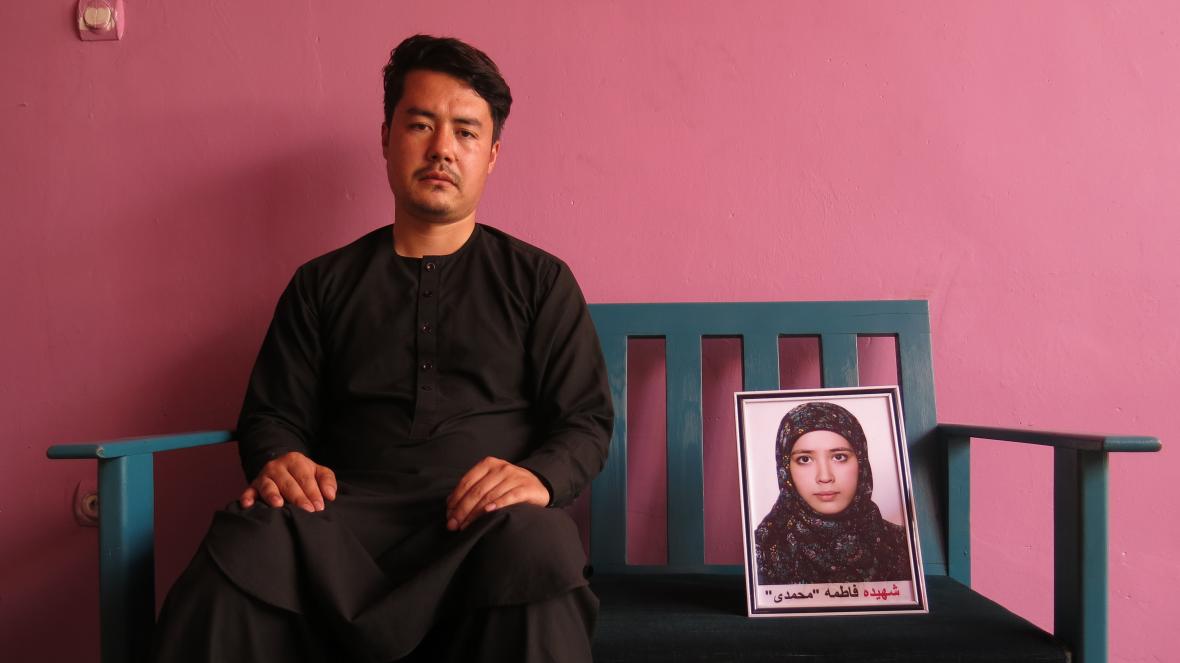Dead friends visit the schoolgirl at night. They return to her dreams as she last saw them: their bodies blasted down the street by the school gates, some with their satchels and clothes aflame.
“They come every night,” Rokiya Ahmedi told me. “I see my classmates dead. I see them on fire. I hear the screaming. I wake up screaming too. I scream for what I see, and I scream because of the fear that men will come to kill me also.”
No one can tell the 15-year-old survivor of last month’s bomb attack at the Sayed al-Shuhada high school in west Kabul that it will never be repeated. At least 85 students, most of them girls aged 15 or 16 from the Hazara ethnic minority, died in the atrocity.
As the last few thousand American and Nato troops prepare to leave Afghanistan, attacks on the Hazara community in the Dasht-e-Barchi quarter of Kabul have continued apace as part of a campaign of terror involving femicide as well as sectarian targeting.
Since mid-May, at least five bomb attacks have killed scores of Hazara in the Afghan capital. Most victims were young, educated females, including teachers and students, two employees from the Afghan Film Organisation, and a TV anchorwoman.
“We feel as if the Hazara community are under specific attack,” said Abul Fazl Rezayee, 27, whose fiancée was murdered on June 12 when the minibus carrying her home from work at the Ministry of Culture and Information was turned into a fireball by a limpet mine that killed four others.
Fatima Mohammed was 23 years old and was so severely burnt that her family had to identify her by a chipped tooth.
“Our wedding halls are bombed; our schools; civilian vehicles; hospitals,” Rezayee added. “Outside Kabul the war is one of front lines and clashes, but inside the city we die at the hands of unseen attackers.”
The Hazara are the country’s third largest ethnic group and are mostly Shia. They have historically suffered at the hands of larger ethnic groups — thousands died in a series of massacres by the Taliban in 1998.
Recent large-scale atrocities against Hazaras in west Kabul, mostly attributed to Islamic State, include the attack in May last year by gunmen on the Dasht-e-Barchi maternity hospital in which 12 mothers and two babies were killed; a suicide bomb attack in October on a Dasht-e-Barchi school which killed 30 pupils and teachers; and the triple bomb attack in May this year on the Sayed al-Shuhada high school. Though scores have died in these attacks, dozens of others have died in recent months in targeted killings.
Earlier this month, Shaharzad Akbar, head of the Afghan Independent Human Rights Commission, called on the UN to begin an international investigation into the murders of Hazaras, suggesting the campaign against them may constitute genocide.
Meanwhile, the hashtag “#StopHazaraGenocide” has become the social media focal point for Hazaras to express their solidarity in the face of the killings.
Nevertheless, even by Afghan standards, at this critical juncture of the war — with the US and Nato hurrying to pull out their remaining troops and the Taliban on the advance — the fear and trauma of Kabul’s Shia community haunts every conversation.
“It feels like they are killing us everywhere, whatever we are doing,” said Hanifa Attayee, 60, whose 23-year-old daughter Parwin was a teacher murdered in the October 2020 suicide attack on a school.
“They kill us like this while the Americans are still here, so we are terrified of what will happen to us once the Americans have gone.”
As much as the sectarian nature of the killings, the terrorist attacks have targeted educated young women. Most bereaved mothers I spoke to in west Kabul were illiterate but had relished the chance to educate their daughters in the two decades that followed the Taliban’s downfall, hoping it would allow them a better future.
Now, with the Taliban on the ascent amid growing chaos in Afghanistan, many fear the era of girls’ schooling may end. Even among young Shia men in west Kabul there is suspicion that a good education may merely earn them graduation to a kill list.
“We all strove for a good education but what good is an education if all it does is get you killed,” said Sayeed Mahdi Mussawi, 21, whose 23-year-old sister Tayyiba Mussawi died in the minibus blast a fortnight ago. An employee with the Afghan Film Organisation, she had died alongside Fatima Mohammed. “I feel hopeless,” her brother said. “It is like we are a ball in the field kicked between sides one to the other: our lives are played.”
For the recently bereaved Shia families, grief at the loss of their children transcends the fear of what may follow when the final western troops leave Afghanistan.
“I cannot describe my feelings over my daughter’s death,” said Mohammed Amin, whose daughter Aqala, 16, was one of the 85 schoolgirls killed in the Sayed al-Shuhada school massacre last month. “All I can say is that when I rushed to the hospital and saw her lying there, unmarked but for a single small wound above her eyebrow; when I looked at the face of the girl I loved and raised; when I saw the clothes I had bought her; the shoes she was wearing; and recognised the satchel lying beside her body, I turned to the doctor and said ‘This cannot be my daughter, for my daughter cannot be dead’. ”








































admin in: How the Muslim Brotherhood betrayed Saudi Arabia?
Great article with insight ...
https://www.viagrapascherfr.com/achat-sildenafil-pfizer-tarif/ in: Cross-region cooperation between anti-terrorism agencies needed
Hello there, just became aware of your blog through Google, and found ...